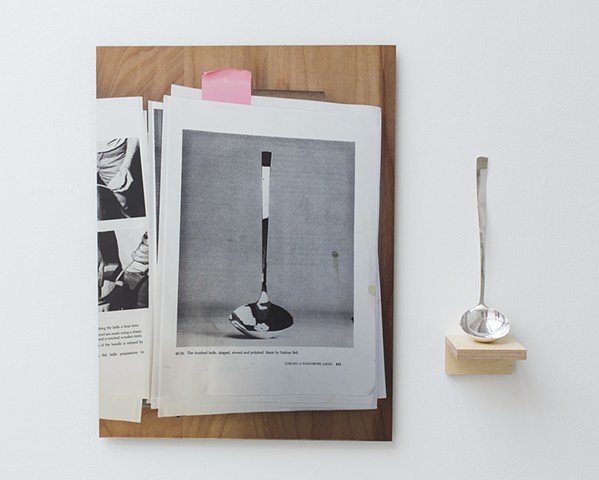As a practicing metalsmith I am part of a venerable lineage of smiths who have demonstrated stunning skill and innovative design in the manufacture of treasured utilitarian, ceremonial and decorative metalwares. This is paramount for my work and identity. I am interested in questions about preservation, authenticity, originality and the acquisition of craft skill. The austerity of utilitarian wares produced by the Roycrofters and the unapologetically indulgent works of Faberge demonstrate the diversity that the skilled and tooled hand can bring to a material like metal; this is both curious and inspiring to me. My work departs from the diverse curiosity that serves as both the physical subject and context. I mine the field’s history, examine and dissect it with uneasy reverence and then re-present it into new objects, images and, always, new questions. I am continually reconfiguring the boundaries of my inquiry in the object and the social and economic hierarchies they fortify and defy. Domestic objects like bowls and trays, parts of utilitarian objects such as spouts and handles, and ornamentation are all used as a familiar language; but the work transcends function and often the final object has only a likeness to its source. In more recent works dollar store house-wares are laboriously transformed into a silver simulacrum. A technical manual is tested (as is my ego) through making objects copied from photographs to explore individuality, identity and purpose. The banal “Revere style bowl” that comes from Paul Revere’s treasured Liberty Bowl is the catalyst to explore authenticity and an American archetype. These themes, while interchangeable are explored through literalism. When considered in this context the idiosyncratic details that make each piece unique become apparent. It is at this moment the viewer begins to see that the object before them is not the one they think they see. The work acts as a vestige of another time period, a distant place and a different set of values that now seem anachronistic and nostalgic. My making process is very intimate, holding my work closely and deftly using tools and techniques. I also reserve the position of a critical observer, skeptical of nostalgia and fevered by discovery. These two positions have fostered a sincere and passionate perspective on the field, my identity within it and my responsibility to make, study and help preserve it.
